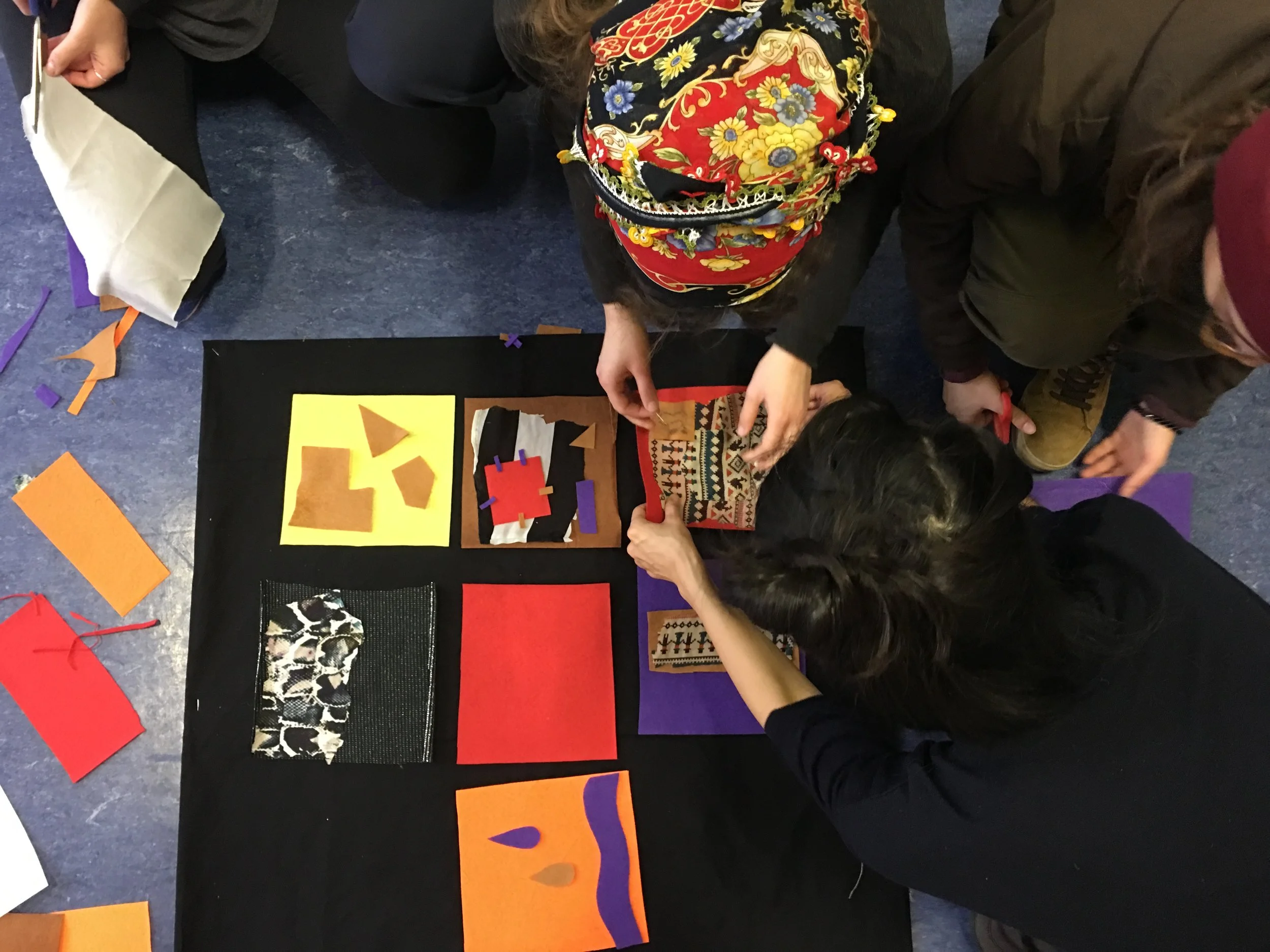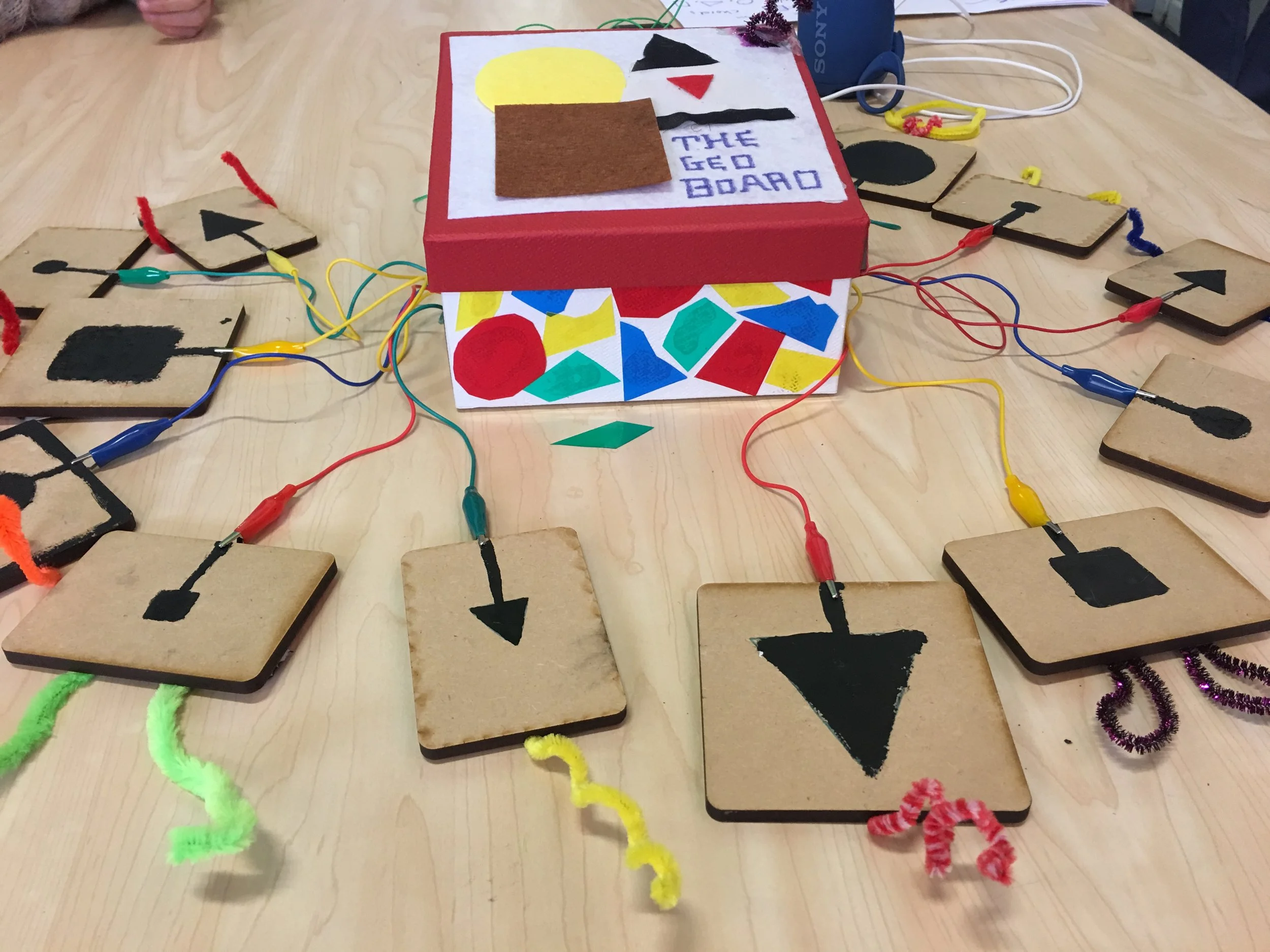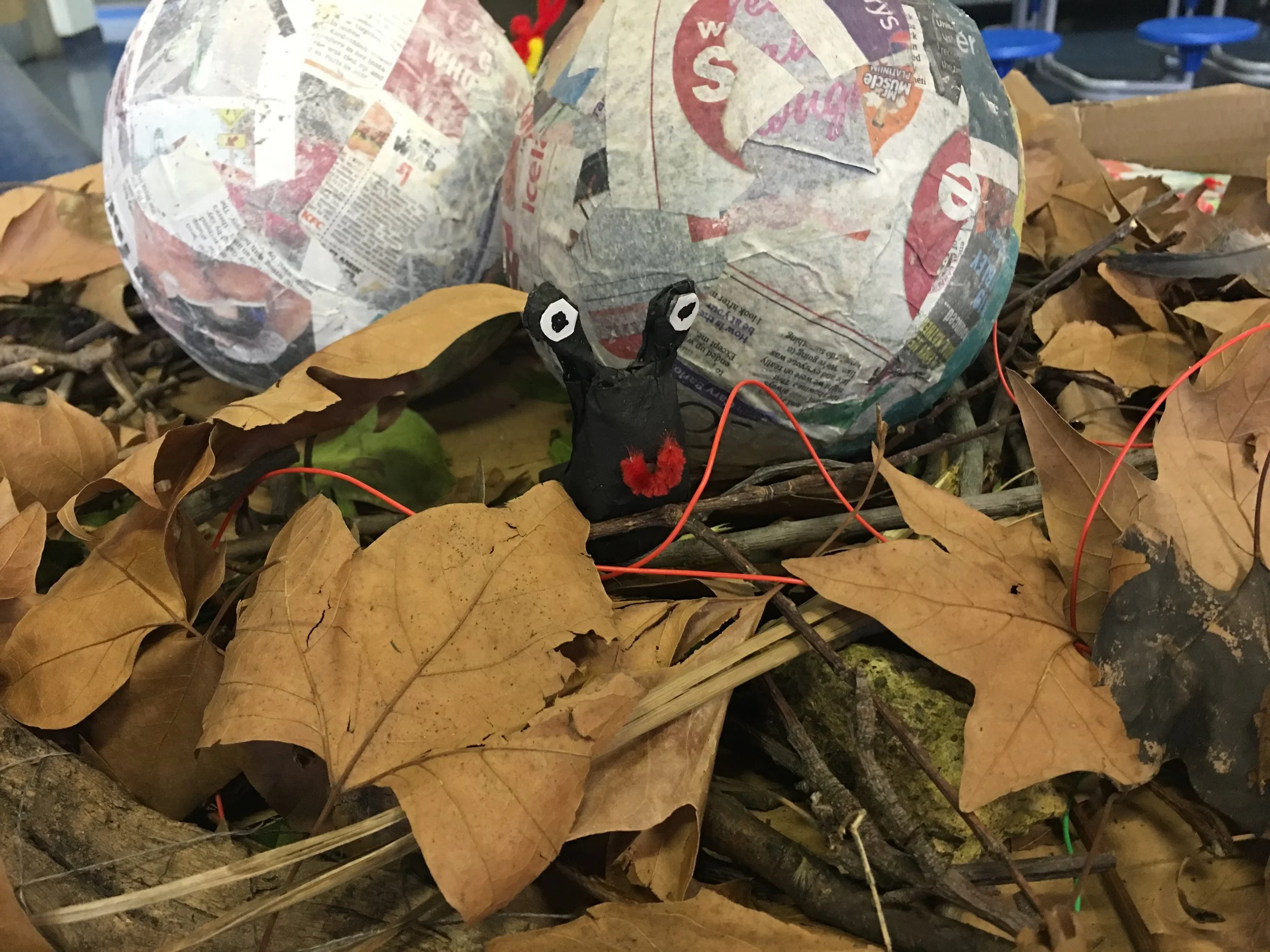This past February 2019 over the school half-term, I had the honor to work with a group of creative young humans aged 7-14 in a project called Future Band for the course of three full days. Run by two of my beloved tutors on the Leadership Course, Detta Danford and Tash Zielazinski, I took part as a member of the band first and foremost, and also as a leader of small breakout groups and helper to hold the space.
The Future Band “is a performing, composing ensemble where every member is involved in the process of making and playing the music we create. For us composing is being in a room and having ideas, listening, responding, building and unbuilding. It is collaborative and involves working together through playing, improvising, listening, discussing, editing, structuring and rehearsing.” In this edition of the band, we had a special guest which certainly had me feeling like a 10 year old, eyes open and hands ready to make. Lia Mice, our guest, came in with arms full of cardboard boxes, old CD’s, cassettes, colorful papers, wires, felt sheets, and *drumroll please*….conductive paint! The magic ingredient which could turn just about anything you can paint into an instrument. Let’s see how below.
The Geo Board.
Conductive paint contains carbon, which makes it conductive to receiving a signal such as touch. When hooked up to a software like Ableton, you can add samples of the sounds you want it to play when the paint is touched. See an example from the Bare Collective below on how conductive paint can work in action.
We spent the first day of the three day project dreaming up instruments and came out with a wide array of different visions and sounds… One was a nest, called Sunny Side Up comprised of leaves, sticks and stones found outside and paper maché eggs and slug. This was the group I worked with for most of my time, recording sounds and putting into Ableton. We made a variety of sound on our instruments, as though we were birds. There was also a comforting sounds blanket, seen at the top of this post, with different pieces from the group captured into conductive fabrics and thread.
Sunny Side Up
Another instrument, called the Pianophone, which was arranged like one chromatic scale of a piano. Behind each key though, was a different arrangement of instruments playing each note.
Beatriz in action working on the Pianophone
What left me most inspired about this, was that anyone can get inspired anytime and anywhere. I have learned so much working with these young people. When possibilities are endless, when sounds don’t have to be “perfect” by western classical standards, when there is the space to explore your instrument in a new way away from scales and traditional technique. When everyone’s ideas are welcome and encouraged. When there are no wrong answers. Put all of that into a creative, democratic, musical, generative space, and it’s amazing what can happen in three days. We finished with newly built instruments, and a thirty minute performance for the parents and families of the kids. I try to imagine what it would have been like to have had this experience when I was at their age, and I think it must have been all-around-awesome. Why? Well, mostly because as a nearly 27 year old, it was certainly all-around-awesome for me too! Give me a paintbrush. Let’s go out and record some sounds and make a sound nest. I’m all in.
Some links to leave you with and to hear some of Future Band’s previous work…
Here is a short film about future band. https://vimeo.com/108892785
To see more work from the Future Band creators and leaders; Detta Danford, https://www.dettadanford.com/, and Natasha Zielazinski https://natashazielazinski.com/.
Check out Lia Mice, who helped make all of this possible. https://www.liamice.com/
If you’d like to find out more about Conductive Paint, look no further than the Bare Collective, where you can find all of your instrument building supplies.



